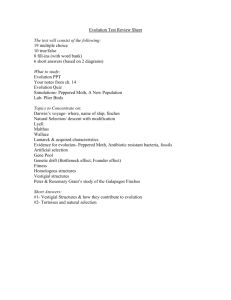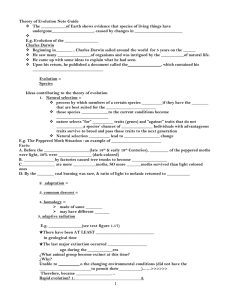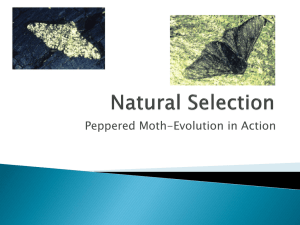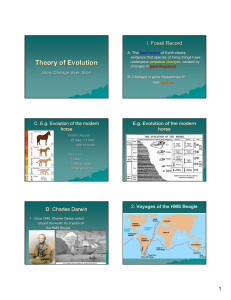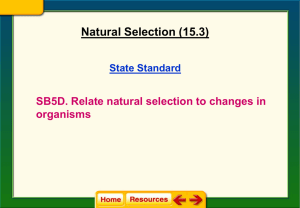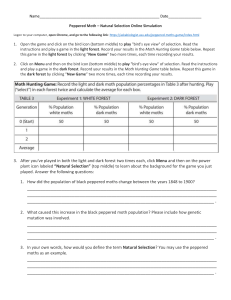7.1 Adaptation (Part 1)
advertisement
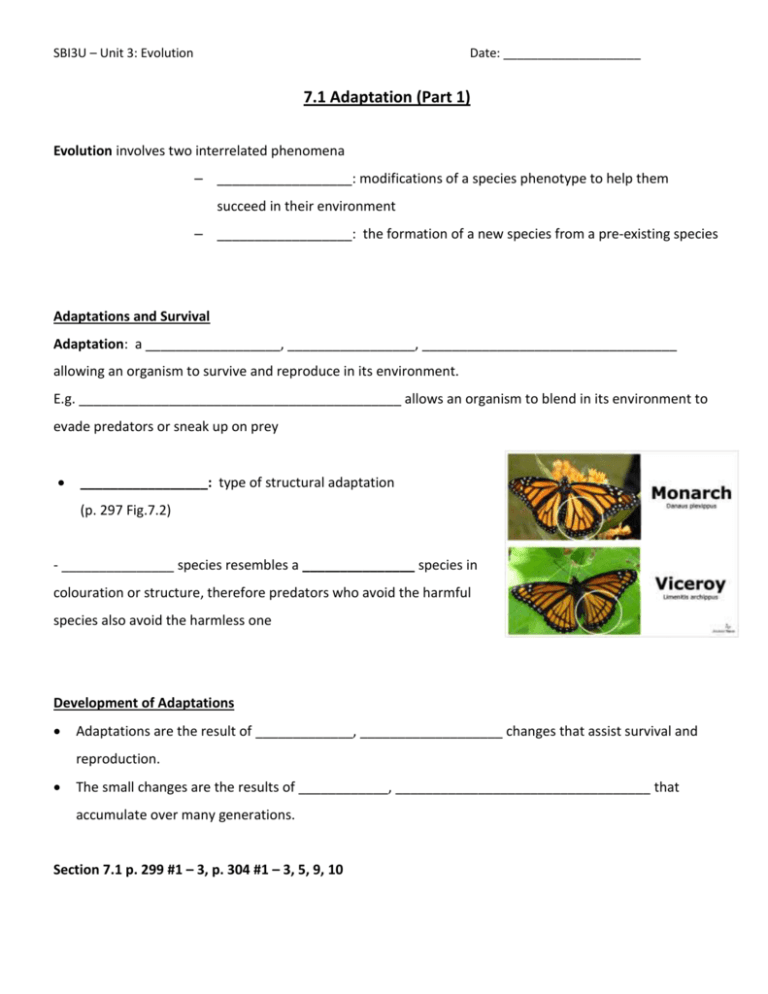
SBI3U – Unit 3: Evolution Date: ____________________ 7.1 Adaptation (Part 1) Evolution involves two interrelated phenomena – __________________: modifications of a species phenotype to help them succeed in their environment – __________________: the formation of a new species from a pre-existing species Adaptations and Survival Adaptation: a __________________, _________________, __________________________________ allowing an organism to survive and reproduce in its environment. E.g. ___________________________________________ allows an organism to blend in its environment to evade predators or sneak up on prey _________________: type of structural adaptation (p. 297 Fig.7.2) - _______________ species resembles a _______________ species in colouration or structure, therefore predators who avoid the harmful species also avoid the harmless one Development of Adaptations Adaptations are the result of _____________, ___________________ changes that assist survival and reproduction. The small changes are the results of ____________, __________________________________ that accumulate over many generations. Section 7.1 p. 299 #1 – 3, p. 304 #1 – 3, 5, 9, 10 SBI3U – Unit 3: Evolution Date: ____________________ 7.1 Variation (Part 2) All species show ____________________. ________________ - structural, functional, or physiological differences between individuals that may or may not become _____________________. Environment Variations can have a positive, negative or no effect on an individual’s ability to survive or reproduce. • Individuals possessing a helpful variation are more likely to _______________. • These individuals pass this variation to the ___________________. • The variation becomes __________________. The Peppered Moth • The English peppered moth (Biston betularia) has three __________________: – Greyish white with black spots (pepper) – Black (melanic) – Intermediate colour (not shown) Pollution • Peppered moths: – Active at night – During day, rest on leaves and tree trunks – Lichen covered trees provide camouflage for pepper coloured moth – Soot from factories ______________________, providing camouflage for ______________________________________ • Frequency of _______________________ increased in population • Individual moths did not change from peppered to melanic Source of Variation • From Unit 2: – Crossing over – Independent assortment – Sexual reproduction • Mutations – changes in ________ sequences – Can happen ______________________ when DNA is copied – Can be caused by __________________________________ etc. Mutations • In which ________ a mutation happens determines if it can be ________________________ to subsequent generations. Selective Advantage • Many mutations may ___________ an individual • Some may provide an _____________________ – _______ function – _______________ function • A selective advantage is a __________________________ of one organism over its competitors. Antibiotic Resistance • Organisms that ___________________________ can see a change in allele frequencies quickly • A gene that may have been rare, can become common in a short period of time if it provide a significant advantage • Imagine a bacteria, exposed to an antibiotic for the first time… Section 7.1 p. 299 #4 – 6, p. 304 #4, 6 – 8, 11-13


